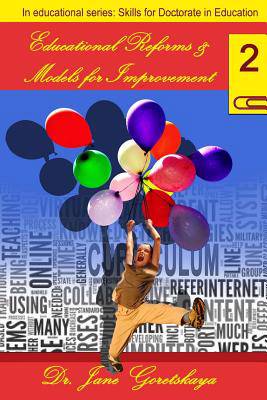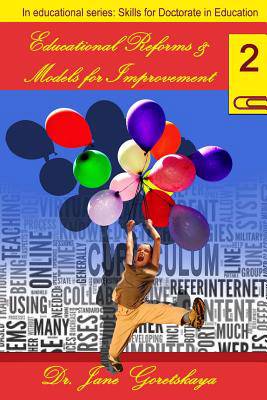
- Afhalen na 1 uur in een winkel met voorraad
- Gratis thuislevering in België vanaf € 30
- Ruim aanbod met 7 miljoen producten
- Afhalen na 1 uur in een winkel met voorraad
- Gratis thuislevering in België vanaf € 30
- Ruim aanbod met 7 miljoen producten
Zoeken
Educational Reforms and Models for Teaching Teachers (2nd edition)
Marina Bichinsky, Jane Goretskaya
€ 60,95
+ 121 punten
Omschrijving
Discussions of Part 1 of Book 2 Educational Reforms and Models for Improvement reflect the needs of the society and respond to the societal changes. When the society structure had been a closed system, the school and culture were created to serve it. At that time, the school had based its structure on the power of an hierarchical authority. Since the societal structure has become a more open system, schools have adapted and introduced change and innovation within its structure. Because change is not automatic, educational leaders are obligated to implement the reforms to improve education. The decision in this part led to understanding how the organizational culture and structure of the American public schools have been created. Although this decision has affected public school philosophy and changed its structure during the last 60 years, policymakers and educators are still working to provide an opportunity to all children for an equal education through new multicultural reforms and acts. Discussion includes a variety of lawsuits and the pros and cons of educational reforms on this issue. Part 2 of the book 2 includes discussions on what has been done to improve teaching and learning. Review of the models for preparing high quality teachers to improve education incorporates such models as four models of the Carnegie Foundation, the Educational Testing Service, and the National Council for Accreditation of Teacher Education. The book concluded with Discussion Questions accompanied by the author's responses.
Specificaties
Betrokkenen
- Auteur(s):
- Uitgeverij:
Inhoud
- Aantal bladzijden:
- 60
- Taal:
- Engels
- Reeks:
- Reeksnummer:
- nr. 2
Eigenschappen
- Productcode (EAN):
- 9781508916291
- Verschijningsdatum:
- 16/03/2015
- Uitvoering:
- Paperback
- Formaat:
- Trade paperback (VS)
- Afmetingen:
- 152 mm x 229 mm
- Gewicht:
- 122 g

Alleen bij Standaard Boekhandel
+ 121 punten op je klantenkaart van Standaard Boekhandel
Beoordelingen
We publiceren alleen reviews die voldoen aan de voorwaarden voor reviews. Bekijk onze voorwaarden voor reviews.











